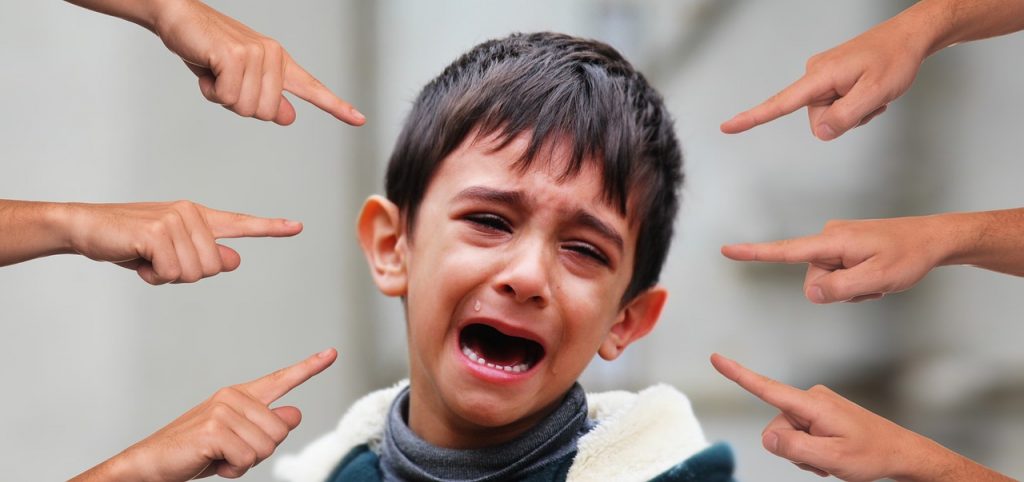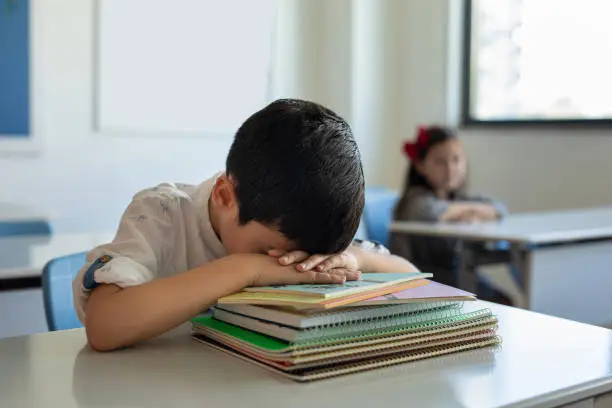The Best Ways for Parents & Educators to Stop Bullying in Schools
17 July 2023 | 6 mins read
- Staff resources
Bullying is a pervasive issue in schools, with a high prevalence in both middle school and high school settings. This behavior typically manifests in different ways, from physical aggression to emotional harm, often characterized by a power imbalance.

While some associate it with simple conflicts among young people, bullying is, in fact, a form of violence that can have long-lasting effects on mental health and overall well-being. It’s also important to note that the United States Department of Health and Human Services has marked October as the National Bullying Prevention Month, underscoring the national importance of this issue.
As we delve into the subject, we will discover the good news – there are effective ways to counteract bullying. These methods often involve the promotion of positive behavior and good communication among students, staff, and parents.
This article will discuss these strategies and more, with the goal of helping school staff create a safe environment where every child can thrive. This isn’t just a quick fix – it’s about making a profound and lasting difference in our children’s lives. After all, prevention efforts today can help young students grow into resilient, compassionate adults tomorrow.
Understanding Bullying
Bullying is generally described as unwanted aggressive behavior among school-aged children that involves a real or perceived power imbalance.
This imbalance of power, either physical or social, separates ordinary conflicts from bullying, making the latter a much more serious issue. The behavior is often repetitive or has the potential to be repeated over time. Both those who are bullied and who bully others may experience serious, lasting problems.

Related read: Bullying vs Harassment: What’s the difference?
At this point, it’s essential to mention that while all schools have incidents of conflict, not every disagreement or fight is an example of bullying. Recognizing the signs of bullying is crucial to addressing it effectively and distinguishing it from other forms of conflict resolution among young children or elementary school students.
What are the different types of bullying?
Bullying can occur in many different ways, manifesting as verbal, social, or physical harm. With the ubiquity of cell phones and the rise of social media, cyberbullying has also become an increasing concern, allowing mean things to be said and spread even beyond school grounds.
Verbal bullying often involves name-calling, threats, and taunts, while social bullying, or social exclusion, can be subtler, involving strategies to exclude the victim from social activities or spreading rumors.
Physical bullying involves actual harm to the person or their belongings. Cyberbullying is particularly nefarious, as the bully can hide behind a screen and the victim relationships can feel more difficult to escape.
Effects of bullying
The effects of bullying are far-reaching and can result in negative impacts on the mental health of victims, leading to depression, anxiety, and low self-esteem.
In severe cases, the psychological damage can persist into adulthood. It’s not just victims of bullying who suffer. Studies from the American Psychological Association have shown that bullies themselves also face greater risks, including violent behavior and criminality in later life.

Bullying also affects student safety and academic achievement, creating an urgent need for prevention programs designed to promote a positive school climate. Research from the National Center for Educational Statistics shows that bullying can have negative effects on both the bullied student and the bully, including academic problems, anxiety, and even low self-esteem.
Therefore, it’s of utmost importance that school personnel and administrators are equipped with the right tools and strategies to identify the warning signs of bullying and take action to prevent it.
Understanding bullying in its various forms and its potential effects is the first step in combating this widespread issue. It is now more crucial than ever for school leaders, teachers, non-teaching staff, and school nurses to have a comprehensive understanding of bullying to protect students and create a positive social environment within their schools.
Legislation and Policies Against Bullying

Bullying is not just a social issue, but a legal one as well. To combat the prevalence of bullying in schools, numerous laws and policies have been enacted at both the federal and state levels.
One of the most significant legal developments has been the Department of Education’s clarification that some bullying may constitute discriminatory harassment, thereby violating federal education anti-discrimination laws.
Are there laws against bullying?
All fifty states in the U.S. now have anti-bullying laws, policies, or both, which require schools to adopt anti-bullying policies, develop prevention strategies, and report instances of bullying.
Many states also specify that their policies should include cyberbullying and off-campus behavior that creates a hostile environment at school.
While legislation forms the bedrock of the efforts against bullying, the effectiveness of these laws varies. Research indicates that the success of these measures often depends on the enforcement and implementation at the local level, which includes school districts and individual schools. Laws are only as effective as the prevention efforts and enforcement strategies that support them, thus emphasizing the crucial role of school administrators and school personnel in ensuring student safety.
This brings to light the fact that while laws and policies provide a solid foundation, the solution to bullying does not solely lie in legislation. It’s also found in the day-to-day actions of schools and their communities.
Related read: The Safe to Tell Law: What You Need to Know
Role of School Administrators in Preventing Bullying
School administrators play a pivotal role in preventing bullying and fostering a safe environment. They have the power to set clear expectations and shape the school’s climate by promoting positive behavior and respect. Administrators can take the lead in adopting research-based programs like the Olweus Bullying Prevention Program, known for its efficacy in reducing bullying and improving the social environment of schools.
It’s essential for administrators to encourage open communication among students, teachers, and parents. They should create platforms where incidents of bullying can be reported without fear. They also need to ensure that reported incidents are dealt with promptly and appropriately.
In addition, administrators should work closely with school districts and local authorities to align their actions with best practices and local regulations.
Involvement in school activities and keeping an active role in the day-to-day life of the school can go a long way in ensuring a positive school climate. They can also ensure that all school personnel, including non-teaching staff, are trained to recognize signs of bullying and understand the best ways to respond.
Related read: Are schools doing enough to stop bullying?
Role of Teachers and School Staff in Preventing Bullying
Teachers and school staff are often the first line of defense against bullying. They have a unique opportunity to promote positive behavior and model good examples of respectful behavior in social situations.

They can play an important role in identifying early warning signs of bullying and intervening before it escalates. Teachers can weave social-emotional learning into their lesson plans, helping students develop empathy and emotional intelligence.
Teachers should cultivate an open communication culture in their classrooms, making students feel safe to report any incidents of bullying. Conflict resolution should be promoted in a positive way, equipping students with the skills to manage disagreements healthily. Teachers can also play a crucial role in implementing an anti-bullying program, by aligning their strategies with the school’s overall approach to bullying prevention.
School staff, including school nurses and non-teaching staff, also play a significant role in preventing cyberbullying in schools. They can help maintain a positive climate, be vigilant for signs of bullying, and provide support for students who may be victims.
Empowering Students to Combat Bullying
Peer intervention is a significant factor in combating bullying. In fact, studies suggest that peers stepping in to defend a victim can end the bullying episode in a matter of seconds. Hence, empowering students to combat bullying is vital. One of the ways is through teaching bystanders to recognize bullying and encouraging them to take a stand. The “buddy system” can also be an effective strategy, fostering friendships and mutual support among students.
Promoting social skills and emotional intelligence can go a long way towards preventing bullying. Lessons on empathy, respect, and understanding differences can significantly reduce instances of bullying. Schools can also empower students by establishing student-led anti-bullying campaigns, giving them a voice and fostering leadership skills.
Having open discussions about bullying, its effects, and how to handle it can help students better understand and address this issue. These conversations can help students feel more confident in reporting bullying incidents, supporting victims, and standing up against the bullies themselves.
Effective Anti-Bullying Programs and Strategies

Successful anti-bullying programs often share certain key elements. These include a whole-school approach involving all members of the school community, clear policies and procedures to address bullying, a safe reporting mechanism, and consistent consequences for bullying behavior. Examples of successful programs include the Olweus Bullying Prevention Program, which has shown positive effects in multiple studies.
Parental involvement is paramount in implementing these strategies effectively. Parents can reinforce anti-bullying messages at home and foster good communication with their children about their experiences at school. They should also maintain open lines of communication with school personnel to stay informed and support the school’s efforts.
The larger community also plays an essential role. Community-wide events, such as workshops or talks, can raise awareness and reinforce the message that bullying is unacceptable. After all, it takes a village to raise a child – and to ensure that child’s school is a safe, nurturing place where they can learn and grow.
Final thoughts
In conclusion, curbing bullying in schools requires a comprehensive, community-wide approach. School administrators, teachers, staff, parents, and most importantly, the students themselves, all have vital roles to play. From understanding the signs and effects of bullying to implementing effective prevention programs, it’s clear that there are many strategies to address this critical issue.
As a call to action, let’s work together to foster an atmosphere of respect, understanding, and open communication in our schools. Let’s empower our young students with the social skills and emotional intelligence they need to stand up against bullying. After all, a safe and positive school climate isn’t just about preventing bullying – it’s about nurturing an environment where every child can thrive, both academically and socially.
Bullying is not an inevitable part of school life. With collective effort and commitment, we can indeed make our schools safer, more inclusive, and more conducive to our children’s lives, growth, and academic achievement.




